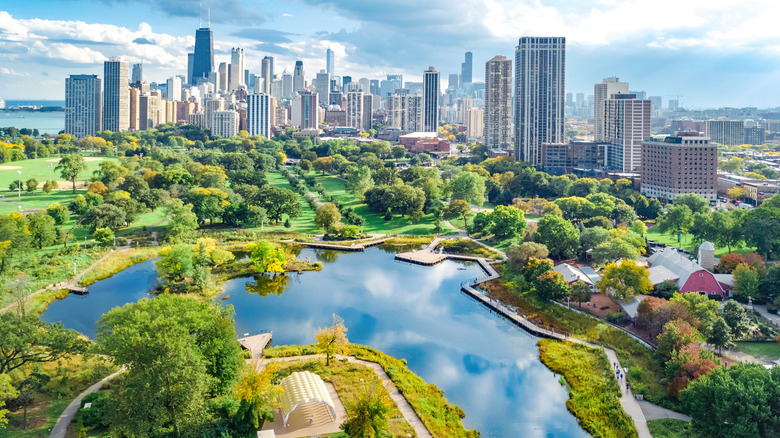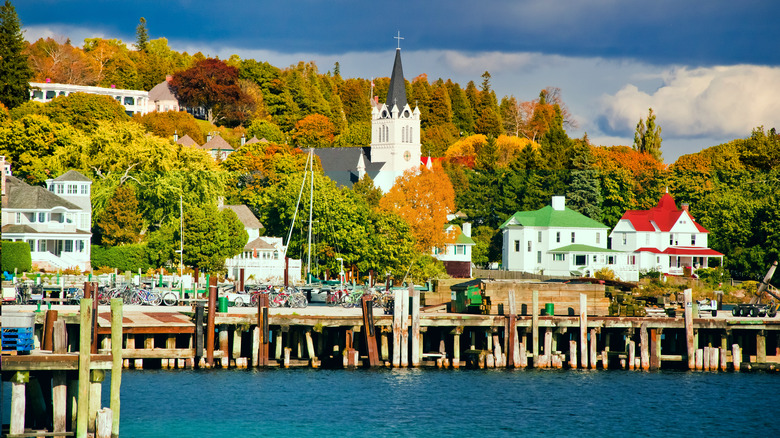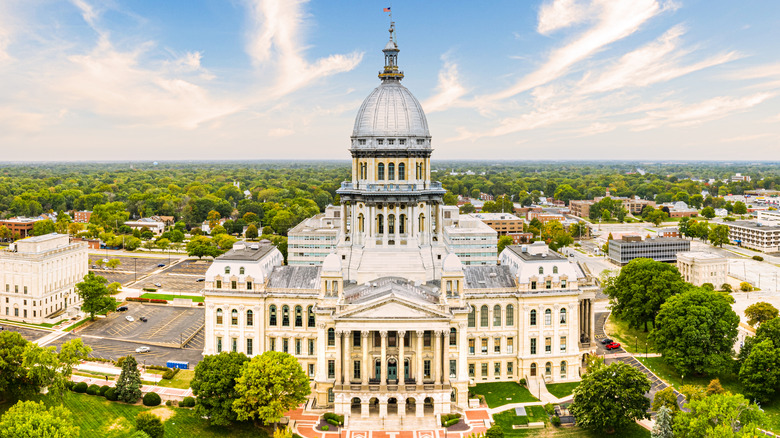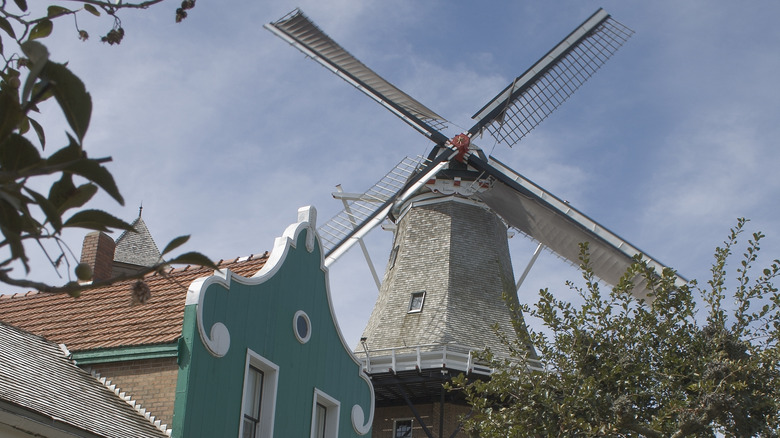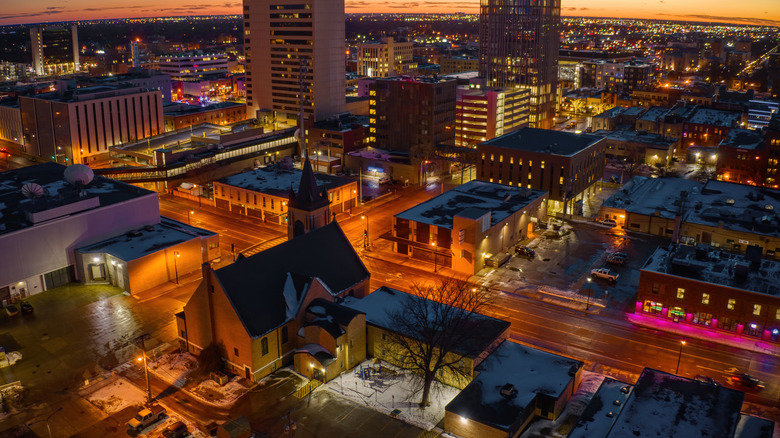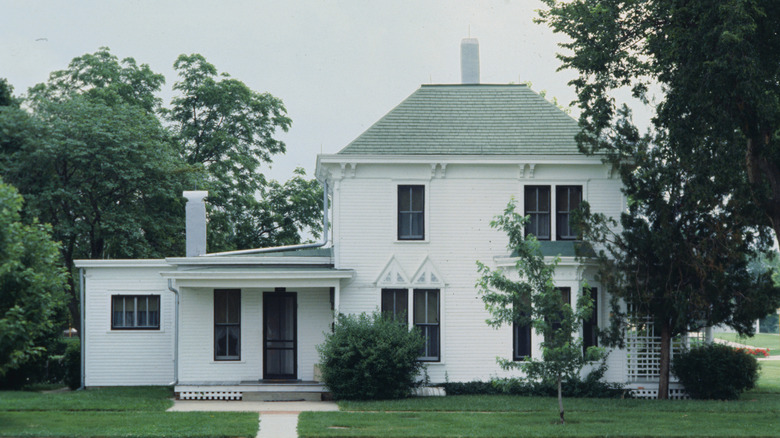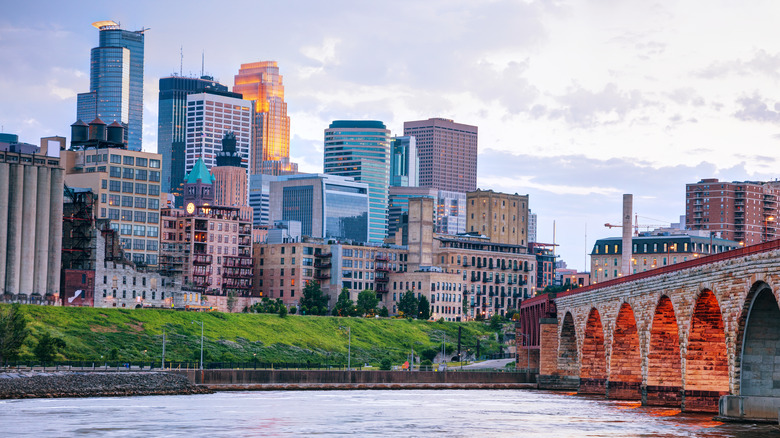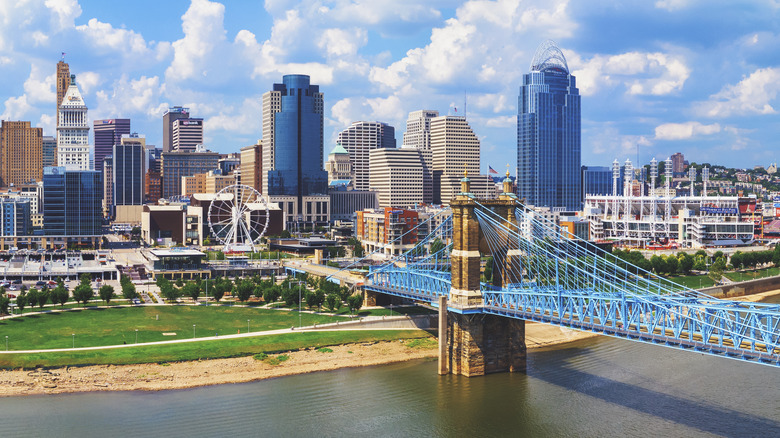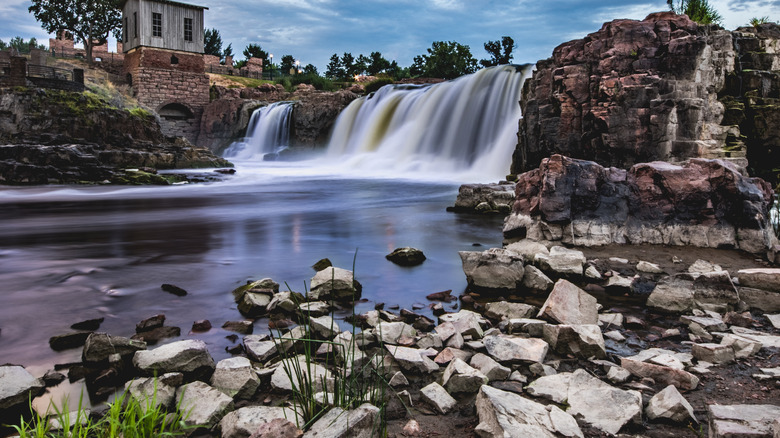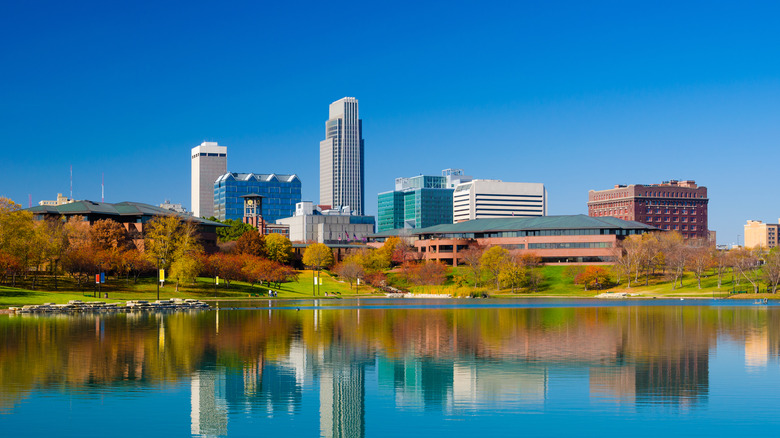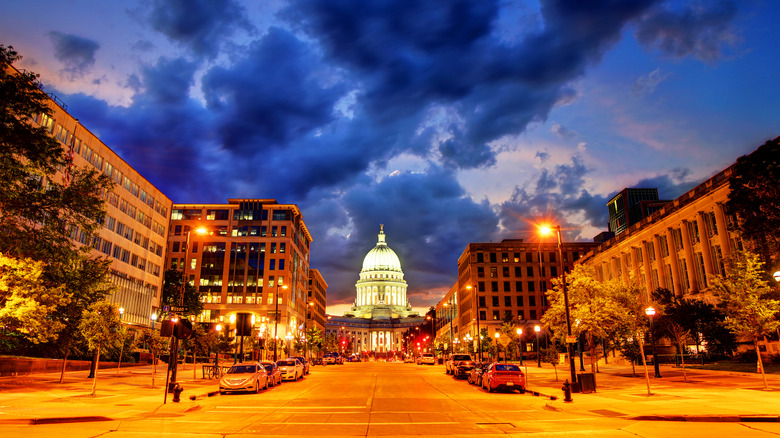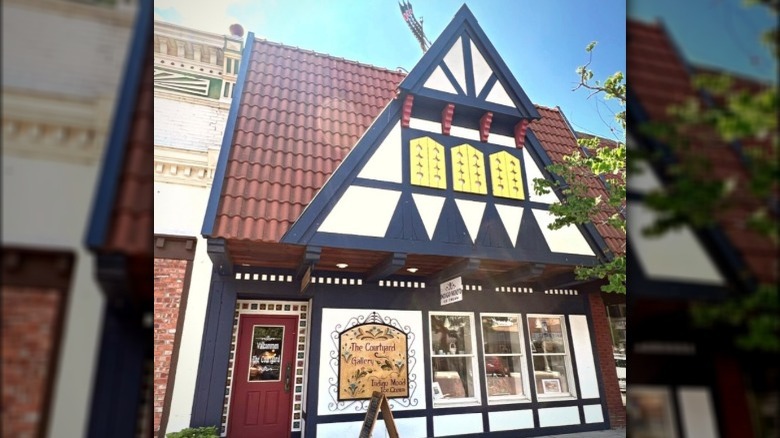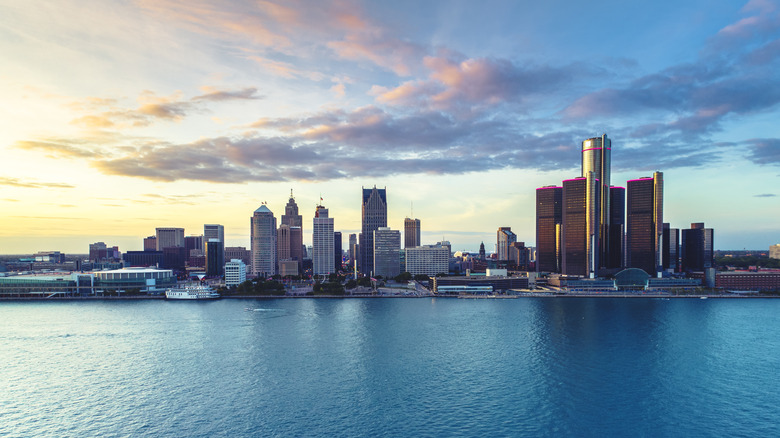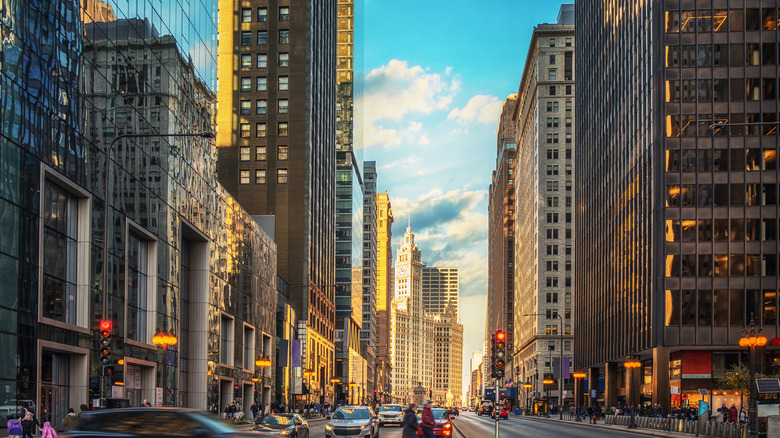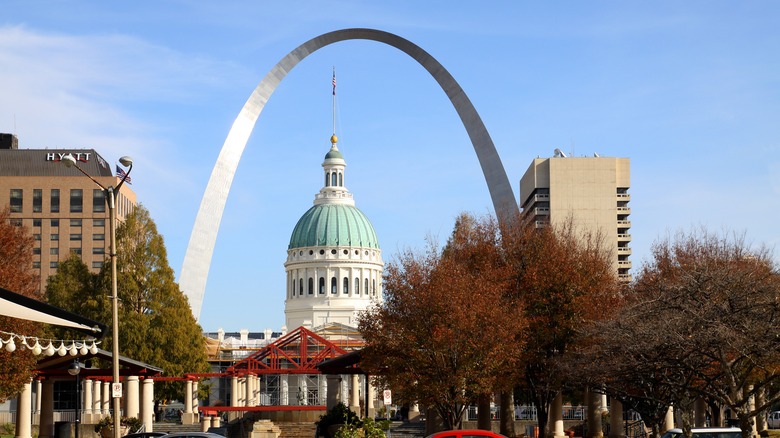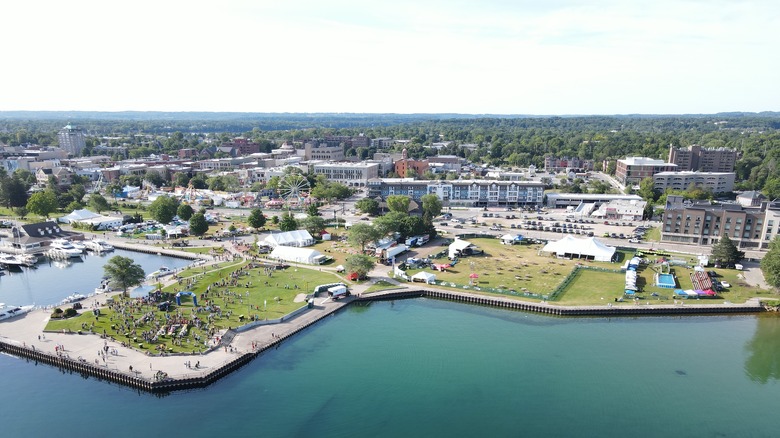15 Best Midwest Cities For History Buffs To Add To Their Bucket List
The Midwest is known as America's Heartland largely because of how much industry and farming have historically been part of Midwestern living. Although much has changed in the Midwest in the last century, this central part of the United States has always been a pivotal piece of the country's legacy. There are too many important places in the Midwest to count. And though a Midwesterner would surely be able to list quite a few, there are a few cities in particular that stand out.
We aren't talking just about industry here either, there are so many places of importance for the region and beyond. From Abraham Lincoln's Springfield to quaint cities still deeply rooted in their immigrant heritage, you'll want to spend some time in these gems of the Midwest. Even Midwesterners sleep on some of these destinations, so don't feel bad if you haven't heard of them. Just be sure to add them to your list.
Mackinac Island, Michigan
Of all the places we could list here, Mackinac Island in Michigan is by far the most unique. Not only is this a historical place worth visiting, but it's also almost like going to a historical park with a modern bent. The majority of the island itself is Mackinac Island State Park, however, the town is a cobblestone marvel. You won't find cars here, just horses and carriages and the best darn fudge you'll ever taste.
East Coasters might be used to seeing historic places, but that doesn't mean that this area is any less special. Mackinac Island is home to an early American fort, Fort Mackinac, and also houses the McGulpin House which dates back to 1790.
Unlike other locations around the Midwest, Mackinac Island has some of the oldest regional structures. You get some of the Revolutionary War history without the trek to the East Coast or the cost of doing so. Even some of the B&Bs will steep you in history, particularly the posh Grand Hotel which dates back to 1887.
Springfield, Illinois
Not to be confused with the non-state-specific Springfield a la "The Simpsons," Springfield is the Illinois state's capital. This petite city with just over 100,000 residents has some stunning architecture to admire, but more than that, it is known as the hometown of President Abraham Lincoln.
Eight score and two years ago when Lincoln became president, Springfield got its due. This lovely little city served as a reminder of the humble Midwestern origins of one of the country's greatest leaders. Thanks to Lincoln's legacy, Springfield is an international destination for folks clamoring to learn more about him and walk in his footsteps. You can even visit his office area from his gubernatorial days as well as his law office.
Over a century later a young pre-presidential career Barack Obama would call Springfield home as well. There must be something about Springfield that beckons history makers to its population. You'll want to be sure to check out the statehouse while you're here for a feel for the governmental aesthetic of Lincoln's time.
Pella, Iowa
As immigrants built many towns in the Midwest, Pella, Iowa fits right in. Settled by the Dutch in 1847, the town quickly became known for its influx of Dutch culture. Some even go so far as to call it "Little Holland." Many immigrant-founded towns have lost their touches of culture since their founding, but Pella is not one of them.
Every May brings a yearly tulip festival, a nod to Pella's connections to Holland. Beyond that, you can enjoy the town's Klokkenspel plaza, Molegracht canal, and the country's tallest working windmill. For folks craving traditional Dutch treats and sweets, there are plenty of those around Pella as well. Don't forget to drop by Jaarsma Bakery for a "banketstaaf" (Dutch Christmas log pastry) or letter pastry.
Should springtime not be your aim, Pella is an ideal spot to celebrate Christmastime as well. The city hosts an annual Christmas Tour of Homes which combines the area's Dutch aesthetic with the vibrancy of the holiday season. Grab a warm cider to enjoy along the way and feel like you've transported yourself to Holland without ever leaving the States.
Fargo, North Dakota
Fargo is much more than just the name of a film and subsequent TV series. Founded in 1871, the city has become one of the cultural and historical epicenters of both North Dakota and its neighboring state of Minnesota.
Fargo is particularly an excellent place for history buffs if you're interested in learning more about the indigenous communities of the Americas over just the history of the United States of America as a country. It was once a pivotal place along the Northern Pacific Railroad. The town became a hub in which the railroad stopped, making its namesake William G. Fargo who ran the NPR and co-founded Wells Fargo Express Company a fitting one.
Like Chicago, Fargo also faced a devastating fire at the end of the 19th century. On June 7, 1893, over 30 blocks of the city were destroyed by fire. Though it burnt down much of the burgeoning city, Fargo rebuilt. You can see the locations that rose from the ashes of that summer fire and appreciate the steadfast nature of the North Dakotans.
Abilene, Kansas
On the other hand, if you're interested in the Wild West and pioneering days, you will want to head over to the Cowtown of Abilene, Kansas. It got its nickname as a Cowtown back in 1861 when cattle ranchers herded hundreds of thousands of cattle into town to put them on an Eastbound train for sale. Even all these years later, Abilene's cowpoke history remains a huge part of its identity.
Abilene was founded just a few years before that in 1858 when Timothy F. Hersey and his family built their log cabin in what would later become the city. It grew exponentially after the Kansas Pacific Railroad came to town in 1867. One of the more famous Wild West names from Abilene's earlier days is undoubtedly Wild Bill Hickok, who was the city marshal known for his deadly aim.
Abilene's most famous former resident was former President Dwight D. Eisenhower. His boyhood home and Presidential Library are both in Abilene, where he is also buried. On top of seeing locations important to Eisenhower, you can also see the C.W. Parker Carousel, the company's first, living Western history in Old Abilene Town, and the Abilene & Smoky Valley Railroad, with its century-old locomotive.
Minneapolis, Minnesota
As one half of the Twin Cities, Minneapolis, Minnesota has always had to find a way to stand out from its sibling along the Mississippi River. Now one of the city's claims to fame is its enormous art scene, but Minneapolis was once known as Mill City. It was the leader in flour production at 18 million barrels at its highest point and even created new milling techniques.
You can learn more about Minneapolis' milling history by paying a visit to the Mill City Museum. This museum is particularly unique because flour is so combustible that the mill exploded in 1878, was rebuilt, and caught fire again in 1991. The museum occupies that fire-damaged building as an homage to its explosive history.
Aside from the industrial and art focuses of this dynamic metropolis, Minneapolis was home to several Native American tribes which you can learn more about at the Minneapolis American Indian Center. Experts believe that indigenous people began occupying the area around 10,000 B.C.E. Among the tribe were the Dakota and Ojibwe. Where the Mississippi River and Minnesota Rivers meet, you will find Bdote, which the Dakota believe is the center of the world.
Cincinnati, Ohio
Other than being the home of Fiona, the most famous hippo on the internet, Cincinnati, Ohio was also a key player in the meat industry. It was called Porkopolis for a while in the late 1800s because it was the biggest meat processing hub in the United States. You'll see subtle reminders of this history throughout the city via pig statues or other public art.
A personal favorite spot in Cincy is the American Sign Museum. This is where you'll see more neon than you'd see outside of perhaps the Neon Graveyard in Las Vegas. But this museum is more than that. It also highlights how signage has changed through the years with the site itself feeling more like a journey back through the decades than a museum.
Although the Taft Museum of Art is a must-see in Cincinnati, and there is no shortage of museums to visit, the city is home to a unique cultural center. The National Underground Railroad Freedom Center is one of just a few museums of conscience in the United States, ranking along with places like the National Civil Rights Museum. A visit to the Freedom Center is bound to give even the most storied history nerd something new to consider. Whether it's a deeper understanding of the perilous journey of escaped slaves or the sub-human conditions enslaved people were put under. It's important to remember and acknowledge moments of inhumanity so that they never happen again.
Sioux Falls, South Dakota
Even Midwesterners will often forget about the Western side of the region when talking about the Midwest. The region is far more than just the central states like Illinois and Minnesota. We won't leave the Dakotas out of this roundup, particularly Sioux Falls in South Dakota. This is another spot where you can learn more about Indigenous peoples.
Far beyond recorded history, Sioux Falls represents ancient natural development. The falls themselves were formed over 14,000 years ago when the last glacial ice sheet changes how the river cut through the rock. These magnificent falls have long since been a place of faith and mystery for indigenous peoples in the area. Even back in prehistoric times, people were burying their loved ones along the bluffs, making Sioux Falls the waterfall an important location.
Exploring Sioux Falls, especially via the museums or state park areas, provides ample opportunity to learn more about the Lakota and Dakota peoples. These indigenous residents were nomadic bison hunters who met with French traders when they landed in the area during the 18th century.
Omaha, Nebraska
Throughout the history of the United States, certainly by the late 1800s, cities like Omaha, Nebraska became crucial to expanding the country. Because of the Union Pacific Railroad, Omaha became a significant stop for travelers venturing West and now the city is home to some of the country's Fortune 500 companies as a result, including Mutual of Omaha and Berkshire Hathaway. It's only fair that the Union Pacific Railroad Museum resides in Omaha given the railroad's immense history in the city.
A fascinating part of Omaha's early days is that vigilantism ran rampant in the 1850s. So much so that a group called the Omaha Claim Club served as a type of self-appointed law system and made squatting acceptable in the city. Eventually, even the Supreme Court had to give the group notice to disband and force the city to have an actual law enforcement system. But none of that stopped the city from becoming a big part of the country's economy by way of railroads, packing, and production.
Madison, Wisconsin
As the capital of Wisconsin, Madison has always held significance for Wisconsinites. Even outside of its obvious importance, the city is full of historical treasures. From buildings designed by Frank Lloyd Wright to some of the most incredible natural sites in the state, Madison is central to all of it. Even the Capitol building is a masterpiece in architecture and is often considered the most beautiful state capital in the country.
You almost can't escape the history blossoming in every corner of the city. From Wisconsin-focused sites like the Wisconsin State Historical Museum to the Wisconsin Veterans Museum, or larger focuses like the Norwegian Heritage Center, Madison is a history-oriented place.
If you're a huge fan of Wright's architecture, you will need to get out of Madison city limits. About an hour outside of the city lies the lovely town of Spring Green. It was here that Wright built Taliesin to serve as a home and studio space. Touring this spot is an absolute must for any fan of Wright's work. Should traipsing to Spring Green be too much, don't worry. Wright's designs like the Unitarian Meeting House and Monona Terrace are both in Madison proper – along with a few private homes he designed as well.
Lindsborg, Kansas
Like Pella, Iowa, Lindsborg in Kansas is almost too cute for words. Lindsborg is largely influenced by the Swedish immigrants who founded it, with hints of the culture everywhere. From the decorated Dala Horses all over town to the Swedish food, souvenirs, and festivals that give this Little Sweden its charm.
You'll be able to experience several Swedish festivals throughout the year as well, providing a much more thorough exploration of the culture than a museum often does. Some of the Lindsborg celebrations include Midsummer, King Knut's Day, St. Lucia, and Våffeldagen or Waffle Day. Though the biggest festival by far is the biannual Svensk Hyllningsfest or Swedish Honoring Festival which celebrates all things Sweden.
Lindsborg also houses Bethany College which puts on Oratorio's Messiah Festival of the Arts during which Handel's Messiah is performed as part of the weeklong festival. The town was even referred to as The Oberammergau of the Plains by Readers Digest in the 1940s – referring to the hours-long passion play done in Oberammergau, Germany every decade since the Black Plague.
Detroit, Michigan
Clearly the Automobile Capital of the World and home to Motown needs a place on this list. Detroit, Michigan has gone through a lot since its heyday as the city built by Ford, but it is still an incredible place well deserving of attention. You can learn all about Ford's accomplishments, including his patented assembly line technique in several museums around the city.
While automobiles have certainly played a key role in Detroit's development, they weren't the only major contribution. Motown Records was founded in Detroit by Berry Gordy Jr. in 1959. This label became a huge part of the music industry, representing musicians such as Diana Ross, Marvin Gaye, Stevie Wonder, Michael Jackson, the Temptations and so many more artists. These musical superstars were all either Detroiters or became famous in Detroit. Either way, Motown put the city on a map that the automobile industry hadn't touched. You can even visit the spot where Motown began to learn more about this production dynamo.
Chicago, Illinois
While most of Chicago isn't as old as some of the other places on this list, mostly because of the Great Chicago Fire in 1871 that destroyed most of the city, Chicago is a deeply important historical city. As the largest city in the Midwest, a lot has happened or been invented in Chicago which will keep history buffs busy for an entire trip if they are dedicated enough.
Just over 20 years following the fire, Chicago hosted the World's Columbian Exposition of 1893. Most of the opulent buildings didn't survive until now, however, the stunning former arts building from the exposition became the Museum of Science and Industry. The MSI building is breathtaking and a clear reminder of how much work went into rebuilding Chicago all those decades ago.
While you're visiting Chicago, you should also check out the DuSable Black History Museum and Education Center. It was named for Jean Baptiste Point du Sable, a free Black man who became Chicago's first non-indigenous resident. The DuSable was the first independent museum in the country dedicated to preserving Black culture.
St. Louis, Missouri
With its unique positionality, St. Louis, Missouri was in the perfect place to be the gateway for westward expansion – the famous Gateway Arch is a reminder of this fact. As a result, the city is rife with historical sites like the Ulysses S. Grant National Historical Site and Grant's Farm as well as the World's Fair: the Louisiana Purchase Exposition and Olympic Games in 1904. You can even learn more about the expansion at the aptly named Museum of Westward Expansion.
There was a time from 1861 to 1903 when St. Louis was thriving so much that it was the country's fourth-largest city. Being connected by both the Mississippi River and train travel made St. Louis a prime spot for transportation and shipping. So its population exploded during the Industrial Revolution. This is immortalized in two different museums in St. Louis including the National Great Rivers Museum and the National Museum of Transportation.
Traverse City, Michigan
The Cherry Capital of the World might not have the kinds of historical sites some of these other locations do, but instead, it offers both its historical significance and natural beauty. You'll never forget the dreamy Sleeping Bear Dunes or the taste of the city's famous cherry wine.
Within Traverse City's historic neighborhood, you'll find the Perry Hannah House which was built by city founder Perry Hannah in 1893. The posh 32-room home is intricately designed and waiting to be adored by visitors. While many of the settlers' buildings or historic places are still standing for visitors, there is a more interesting piece of history to explore.
A stop at the Eyaawing Museum & Cultural Center will give you insight into the lives and art of the Native Peoples who first inhabited the land. Traverse City's original name, La Grand Traverse, was called such by indigenous hunters and French traders who made the trek across the bay.
